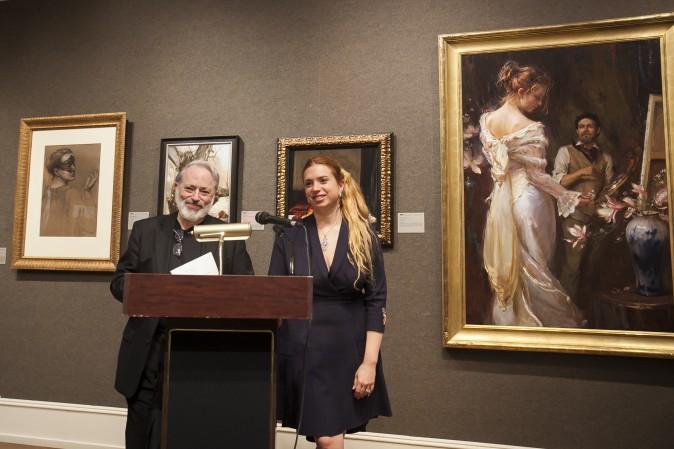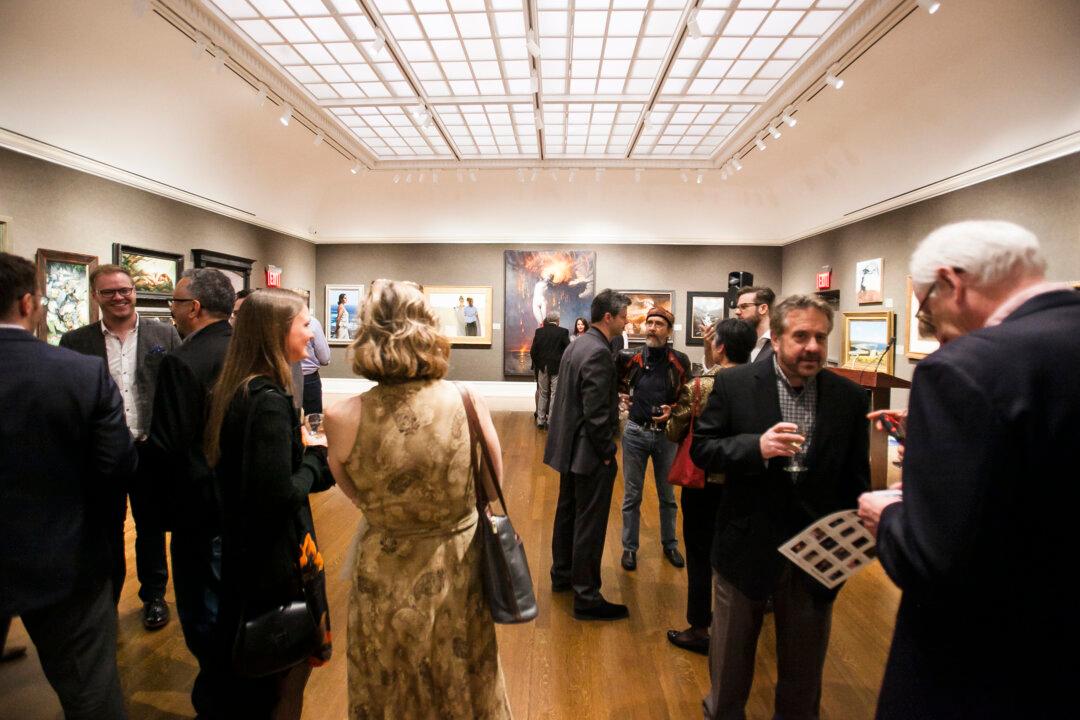NEW YORK—The most prominent realist art competition, and the only one of its kind, the ARC Salon opened its exhibition to the public at the Salmagundi Club on May 13. The 12th annual international salon of the Art Renewal Center (ARC) can be seen in its entirety online.
In contrast to the fairs that highlight celebrity status and sales (such as the Venice Biennale in Italy, Frieze in New York, Art Basel in Miami, and so on), ARC Salon is an art competition on a grand scale. While it also displays works to be sold, its main aspiration is to uphold excellence in visual representation along the lines of the Paris Salons and Royal Academy of Arts exhibitions.
“After more than a hundred years of modernism’s fascination with the flatness of the canvas and ideas like form or color for their own sake, a growing number of artists, scholars, as well as the public have grown bored with these limited parameters of the definition of contemporary art,” said Frederick Ross, founder and chairman of the ARC, at a press preview on May 12. The educational foundation has been a leading force in reviving realism in the visual arts since it was founded in 1999.
A board of 11 judges—including museum directors, art historians, magazine editors and publishers, academy and atelier founders, and distinguished artists—selected 82 works out of 3,100 entries from 63 countries. The parlor and main gallery of the Salmagundi Club is packed full with paintings hanging side by side, carefully labeled according to award and category, including best figurative, portraiture, imaginative realism, social commentary, landscape, still life, trompe l'oeil, drawing, sculpture, and more.
“Since 2010, we have experienced double-digit growth each year to the number of entries submitted. This year alone, we had a 25 percent increase,” said Kara Lysandra Ross, ARC chief operating officer, at the press preview.







